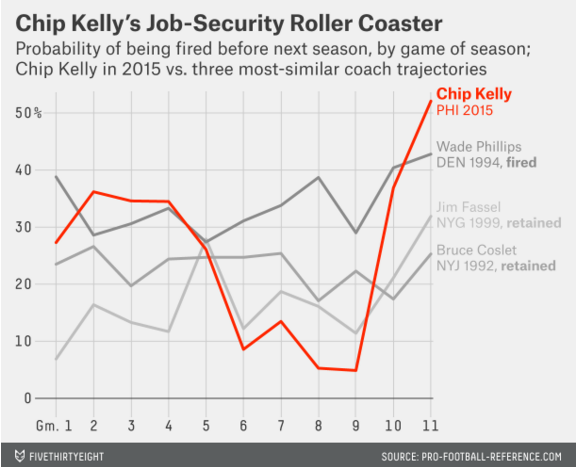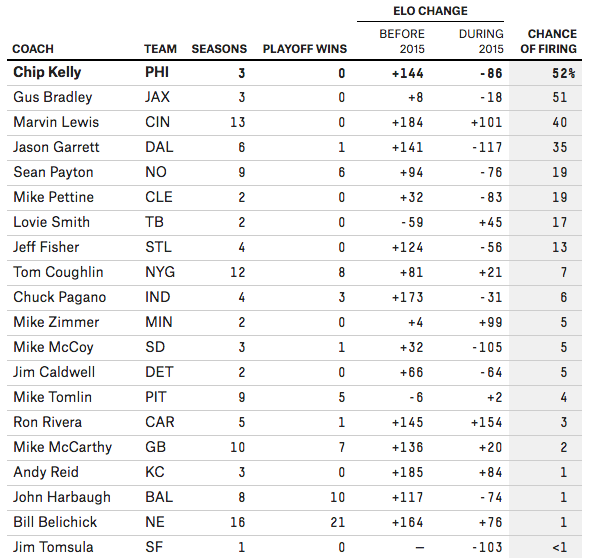Ad Disclosure
Chip Kelly’s Job is in Danger, According to FiveThiryEight’s Weird Math
By Jim Adair
Published:

FiveThirtyEight loves Elo. Not Jeff Lynne’s Electric Light Orchestra, but the Elo rating system, which rates teams using just the final scores of games and home-field advantage. It’s not a perfect system and much is left out of the so-called equation, but it’s a quick and dirty way to show you how good a team actually is.
Other than win probabilities, you can use Elo to figure out a bunch of different things, like the chances Chip Kelly gets fired. Neil Paine did some complex stuff:
To measure just what it takes for a coach to get fired in the NFL, I trained a classification model on data for every NFL coach since the 1970 AFL-NFL merger, looking for the factors that predict whether he’ll return the following season. The best model, in terms of having the lowest “out-of-bag error,” accounts for how long a coach has been with his team, the team’s outlook going into the season, and how many playoff wins the coach has recorded during his tenure with the team. Coaches are typically given more leeway early, with firings peaking three to six years into their tenures, and unsurprisingly, playoff wins buy more job security. We used our Elo ratings as a proxy for team outlook; whatever you think of its predictive capabilities, Elo is a fantastic gauge of team perception and expectations.
So what did all of that mumbo jumbo result in? A 52% chance Chip finds himself out of a job:
But these numbers aren’t exactly constant. When the Eagles beat the Cowboys a couple of weeks ago, Chip had a 5% chance of losing his job. Tthe games since have shot a needle into the ass of that number. But still, “the average coach who was fired since 1970 was assigned a 76 percent probability by the model at this stage of the season,” and they didn’t have Jeffrey Lurie as an owner, personnel control, and more name and face recognition than any of their players. Chip is safe, but it’s not pretty.
When he's not writing about sports here or ranting about them on Twitter, Jim is probably watching X-Files on Netflix or drinking a beer somewhere. Jim has nothing against hockey, it's just not his style. He once met Duce Staley at a Sixers game.
